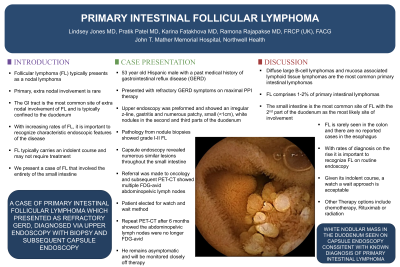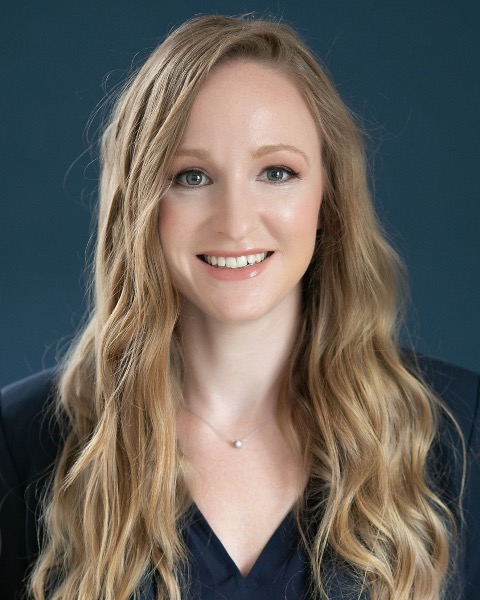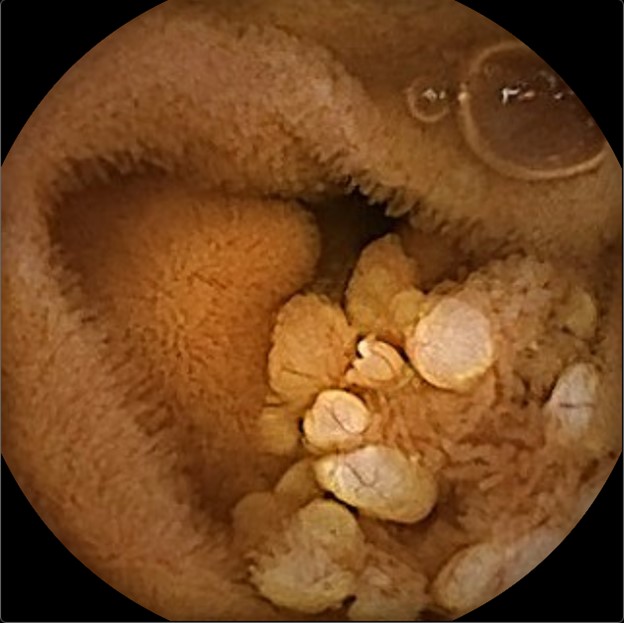Back


Poster Session A - Sunday Afternoon
Category: Small Intestine
A0665 - Primary Intestinal Follicular Lymphoma
Sunday, October 23, 2022
5:00 PM – 7:00 PM ET
Location: Crown Ballroom

Has Audio

Lindsey Jones, MD
Mather Hospital, Northwell Health
Port Jefferson, NY
Presenting Author(s)
Lindsey Jones, MD1, Pratik Patel, MD2, Karina Fatakhova, MD3, Ramona Rajapakse, MD4
1Mather Hospital, Northwell Health, Port Jefferson, NY; 2Northwell Health at Mather Hospital, Middle Island, NY; 3Northwell Health at Mather Hospital, Port Jefferson, NY; 4Mather Hospital, Port Jefferson, NY
Introduction: Follicular Lymphoma (FL) mostly presents as a nodal lymphoma, however primary extranodal involvement is rare. The gastrointestinal tract is the most common site of extranodal FL, and with rates of FL increasing it remains important to recognize the characteristic endoscopic features of the disease. It typically carries an indolent course that may not even require treatment. We present a case of primary intestinal FL that involved the entire small intestine.
Case Description/Methods: A 53-year-old Hispanic male with a history of gastrointestinal reflux disease (GERD), presented with refractory GERD symptoms despite maximal PPI therapy. An upper endoscopy was performed and revealed an irregular Z line, gastritis and numerous, patchy, small (< 1cm), white nodules in the second and third portion of the duodenum. Multiple biopsies were taken from the nodules. Pathology revealed Grade I-II FL. Capsule endoscopy was performed and revealed numerous similar lesions throughout the entire small intestine. He was referred to Oncology and underwent PET-CT scan which revealed multiple FDG-avid abdominopelvic lymph nodes. After discussion with Oncology, the patient elected for a watch and wait approach. Repeat PET-CT scan 6 months later revealed multiple abdominopelvic lymph nodes that are no longer FDG-avid. He remains asymptomatic and will be monitored closely off therapy.
Discussion: The most common primary intestinal lymphomas are diffuse large B-cell lymphoma (DLBCL) and mucosa associated lymphoid tissue (MALT) Lymphoma. FL only comprises approximately 1-2% of primary intestinal lymphomas. The small intestine is the most common location, with the second portion of the duodenum as the most likely site of involvement. It is rarely seen in the colon and stomach and there are no reported cases of esophageal involvement. Rates of diagnosis are on the rise, thus highlighting the importance of endoscopic recognition as it may often be seen in the second portion of the duodenum on routine upper endoscopy. Given the indolent course of FL, a watch and wait approach may be reasonable. Other options for therapy include chemotherapy, Rituximab, or radiation.

Disclosures:
Lindsey Jones, MD1, Pratik Patel, MD2, Karina Fatakhova, MD3, Ramona Rajapakse, MD4. A0665 - Primary Intestinal Follicular Lymphoma, ACG 2022 Annual Scientific Meeting Abstracts. Charlotte, NC: American College of Gastroenterology.
1Mather Hospital, Northwell Health, Port Jefferson, NY; 2Northwell Health at Mather Hospital, Middle Island, NY; 3Northwell Health at Mather Hospital, Port Jefferson, NY; 4Mather Hospital, Port Jefferson, NY
Introduction: Follicular Lymphoma (FL) mostly presents as a nodal lymphoma, however primary extranodal involvement is rare. The gastrointestinal tract is the most common site of extranodal FL, and with rates of FL increasing it remains important to recognize the characteristic endoscopic features of the disease. It typically carries an indolent course that may not even require treatment. We present a case of primary intestinal FL that involved the entire small intestine.
Case Description/Methods: A 53-year-old Hispanic male with a history of gastrointestinal reflux disease (GERD), presented with refractory GERD symptoms despite maximal PPI therapy. An upper endoscopy was performed and revealed an irregular Z line, gastritis and numerous, patchy, small (< 1cm), white nodules in the second and third portion of the duodenum. Multiple biopsies were taken from the nodules. Pathology revealed Grade I-II FL. Capsule endoscopy was performed and revealed numerous similar lesions throughout the entire small intestine. He was referred to Oncology and underwent PET-CT scan which revealed multiple FDG-avid abdominopelvic lymph nodes. After discussion with Oncology, the patient elected for a watch and wait approach. Repeat PET-CT scan 6 months later revealed multiple abdominopelvic lymph nodes that are no longer FDG-avid. He remains asymptomatic and will be monitored closely off therapy.
Discussion: The most common primary intestinal lymphomas are diffuse large B-cell lymphoma (DLBCL) and mucosa associated lymphoid tissue (MALT) Lymphoma. FL only comprises approximately 1-2% of primary intestinal lymphomas. The small intestine is the most common location, with the second portion of the duodenum as the most likely site of involvement. It is rarely seen in the colon and stomach and there are no reported cases of esophageal involvement. Rates of diagnosis are on the rise, thus highlighting the importance of endoscopic recognition as it may often be seen in the second portion of the duodenum on routine upper endoscopy. Given the indolent course of FL, a watch and wait approach may be reasonable. Other options for therapy include chemotherapy, Rituximab, or radiation.

Figure: White nodular mass in duodenum visualized on capsule endoscopy consistent with patient's known diagnosis of Follicular Lymphoma
Disclosures:
Lindsey Jones indicated no relevant financial relationships.
Pratik Patel indicated no relevant financial relationships.
Karina Fatakhova indicated no relevant financial relationships.
Ramona Rajapakse indicated no relevant financial relationships.
Lindsey Jones, MD1, Pratik Patel, MD2, Karina Fatakhova, MD3, Ramona Rajapakse, MD4. A0665 - Primary Intestinal Follicular Lymphoma, ACG 2022 Annual Scientific Meeting Abstracts. Charlotte, NC: American College of Gastroenterology.
